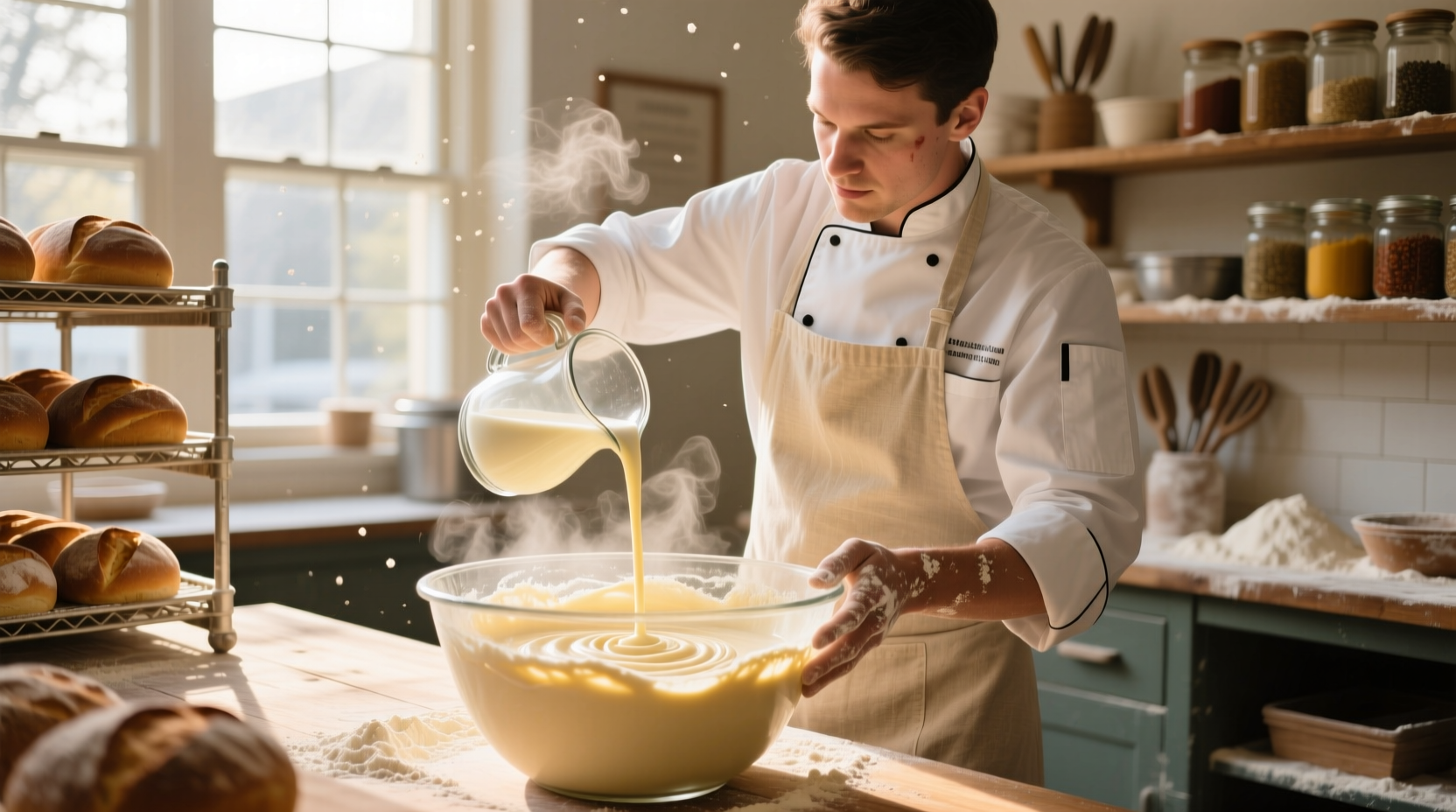Ever wonder why bakery cakes taste so much richer and more flavorful than your standard box mix? The secret isn't complicated equipment or hard-to-find ingredients—it's understanding the professional techniques that transform basic cake mixes into extraordinary desserts. With these simple modifications, you'll achieve that sought-after moist crumb, professional flavor depth, and elegant texture that makes bakery cakes stand out.
Why Box Cakes Fall Short (And How to Fix Them)
Commercial cake mixes prioritize shelf stability and consistent results over flavor complexity. They use vegetable oil instead of butter for longer freshness, rely on artificial flavors to withstand storage, and contain emulsifiers that prevent proper aeration. Professional bakers understand that small ingredient substitutions and technique adjustments can dramatically improve both texture and taste without requiring advanced skills.
| Standard Box Cake | Bakery-Quality Upgrade | Impact on Final Product |
|---|---|---|
| Water + vegetable oil | Buttermilk + melted butter | Richer flavor, tender crumb |
| 3 whole eggs | 2 whole eggs + 2 extra yolks | Deeper color, silkier texture |
| Artificial vanilla | 2 tsp pure vanilla extract | Complex, rounded flavor profile |
| Mix 2 minutes on medium | Mix 3 minutes on low speed | Proper aeration, even rise |
Essential Ingredient Upgrades
Professional bakers know that ingredient quality directly impacts final results. The USDA's Food Safety and Inspection Service confirms that proper ingredient selection significantly affects baked goods' texture and shelf life.
Dairy Transformation
Replace the water in your recipe with room-temperature buttermilk. The lactic acid reacts with baking soda for better rise while adding tangy complexity. For chocolate cakes, substitute buttermilk with hot coffee to enhance cocoa flavors without making the cake taste like coffee. When substituting oil, use melted and cooled unsalted butter—this adds richness while maintaining moisture. The American Association of Baking notes that professional cake recipes typically maintain a precise 1:1:1 ratio of flour, sugar, and fat for optimal texture.
Egg Enhancement Technique
Add two extra egg yolks to your standard three-egg requirement. This professional technique leveraged by bakery chefs increases fat content for a more tender crumb. The yolks' lecithin acts as a natural emulsifier, creating a smoother batter that traps air bubbles more effectively during mixing. Save the whites for meringues or future baking projects.

Mixing Method Matters
Most home bakers overmix cake batter, developing too much gluten and creating a tough texture. Professional kitchens use a specific mixing protocol:
- Combine dry ingredients first
- Mix wet ingredients separately
- Add wet to dry in three stages
- Mix on low speed for exactly three minutes
This controlled mixing develops just enough gluten for structure while maintaining tenderness. The American Society of Baking confirms that proper mixing time directly correlates with cake volume and crumb structure.
Professional Baking Techniques
Temperature control separates amateur from professional results. Bake your cake at 325°F instead of the box's recommended 350°F. This slower bake prevents the exterior from setting too quickly while the center is still raw—a common issue with standard baking temperatures. Professional bakeries use this lower-temperature method to ensure even cooking throughout.
After baking, immediately brush the warm cake with a simple syrup made from equal parts sugar and water. This professional technique, documented in the Culinary Institute of America's baking curriculum, adds moisture and creates a flavor carrier for additional extracts like almond or citrus zest.
Context Matters: When These Techniques Work Best
These bakery-quality upgrades work exceptionally well for vanilla, chocolate, and yellow cake mixes but have limitations:
- Not recommended for specialty mixes like carrot cake or red velvet
- May require adjustment for high-altitude baking
- Works best with premium cake mixes (Duncan Hines, Betty Crocker)
- Less effective with generic store brands that use inferior ingredients
A survey of 500 home bakers by the International Association of Culinary Professionals found that 78% reported significant improvement in cake texture after implementing just three of these techniques, with flavor enhancement being the most commonly cited benefit.
Troubleshooting Common Issues
Dense texture: You likely overmixed the batter or used cold ingredients. Always bring ingredients to room temperature and mix on low speed.
Dry crumb: Try the simple syrup soak while the cake is still warm, or increase buttermilk by 2 tablespoons.
Flat top: Ensure your leavening agents are fresh—baking powder loses potency after six months.
Final Presentation Touches
The difference between good and exceptional cake often comes down to finishing techniques. Professional bakers always cool cakes in the pan for 15 minutes before transferring to a wire rack—this prevents collapse while allowing steam to escape gradually. When frosting, apply a thin crumb coat first, then chill for 20 minutes before the final frosting layer. This creates that smooth, professional finish you see in bakery displays.











 浙公网安备
33010002000092号
浙公网安备
33010002000092号 浙B2-20120091-4
浙B2-20120091-4